
Planting hostas under maple trees makes a refreshing, shaded haven where they flourish.
They prefer moist, loose soil that isn’t overly saturated.
Ferns and mosses create a lush, green ground cover.
Bright stones sparkle in the shadows, adding a touch of light.
Vertical gardens save space while creating living green walls.
Water features offer tranquility and draw in butterflies.
Transform your shady spot into a relaxing retreat.
Hostas and ferns do well where sunlight is filtered.
Include stones or a small pond for added charm.
Each idea helps you cultivate a vibrant, happy garden.
Simple steps can make shade gardens magical.
Explore designs that complement your yard’s unique style.
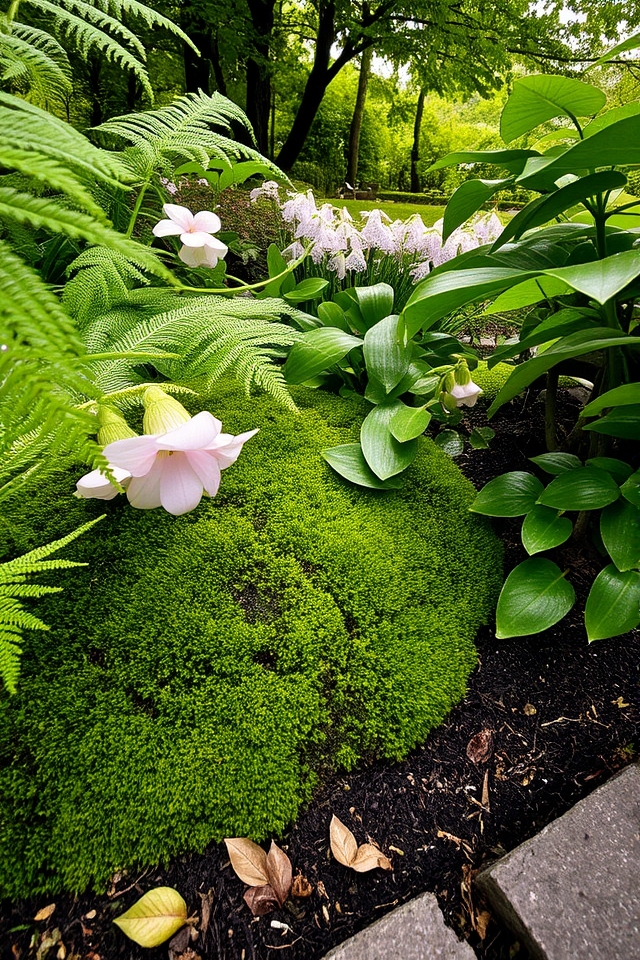
Opt for plants that excel in low-light conditions, such as ferns, hostas, and impatiens. Focus on shade-loving plants like mosses, dicentra, and hellebores. Pay attention to soil moisture and pH levels, as some plants prefer moist, rich soil, while others need drier, well-drained conditions. Steer clear of sun-loving plants; instead, choose varieties labeled “shade-loving” or “part shade.” Ensure adequate spacing and care to encourage healthy growth in limited sunlight.
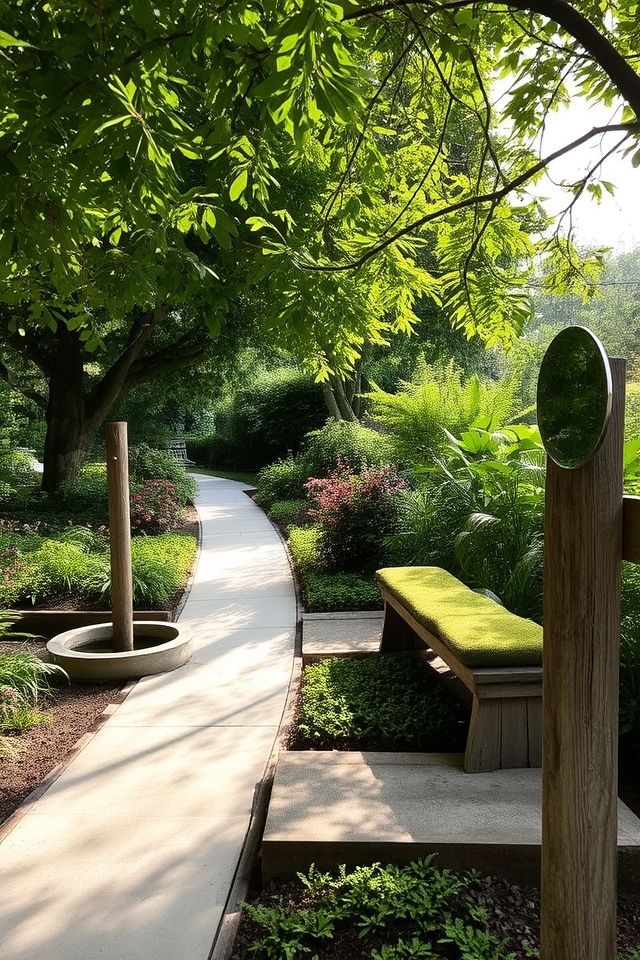
Design shaded areas using shade-tolerant plants like ferns, hostas, and azaleas. Use light-colored materials and reflective surfaces to brighten the space. Layer different plant textures for visual appeal. Add water features or mirrors to amplify light. Select durable, easy-to-maintain materials for paths and seating. Ensure good airflow to prevent dampness. Prioritize practical layouts that maximize the available light.
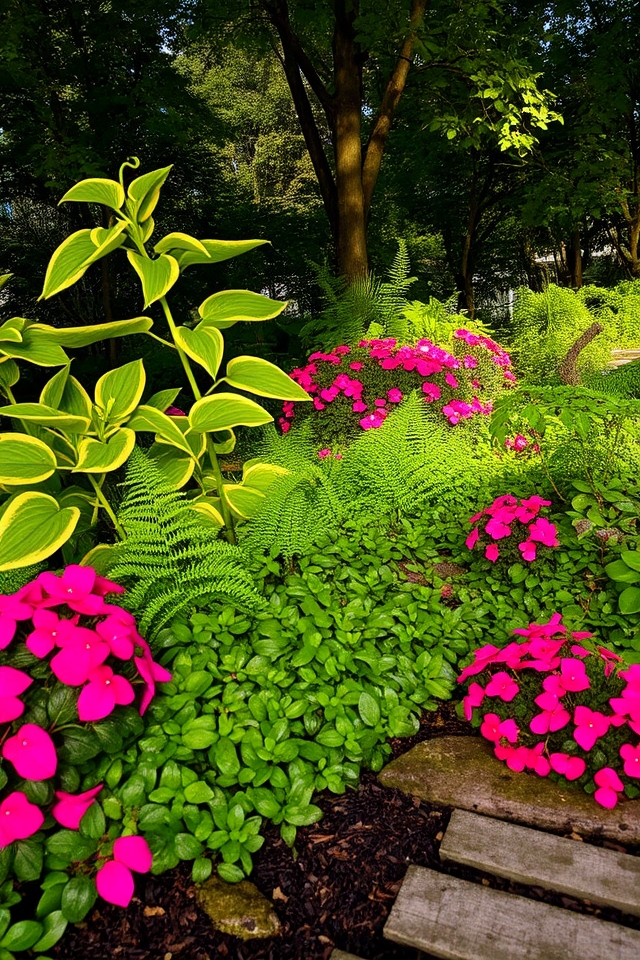
Easy-care shade plants include hostas, ferns, and impatiens. These plants thrive with minimal watering in indirect light. Hostas provide lush foliage, while ferns add interesting textures. Impatiens offer vibrant color. Consider ground covers like pachysandra for effortless upkeep. They need little pruning and adapt well to shade, perfect for busy gardeners.
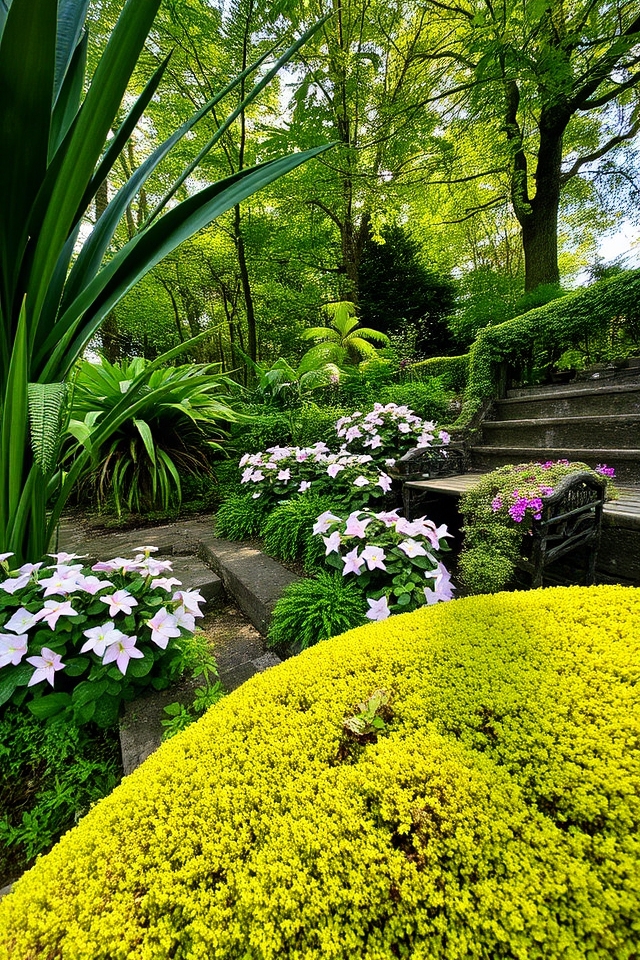
Layering plants in shade gardens adds depth and visual interest. Begin with taller plants like hostas or ferns as a backdrop, then incorporate medium-sized shrubs such as azaleas. Add low-growing ground covers like moss or ivy for contrast. Use hanging plants or trailing vines to fill in gaps. Select plants with different foliage colors and shapes to create visual interest while thriving in shade.
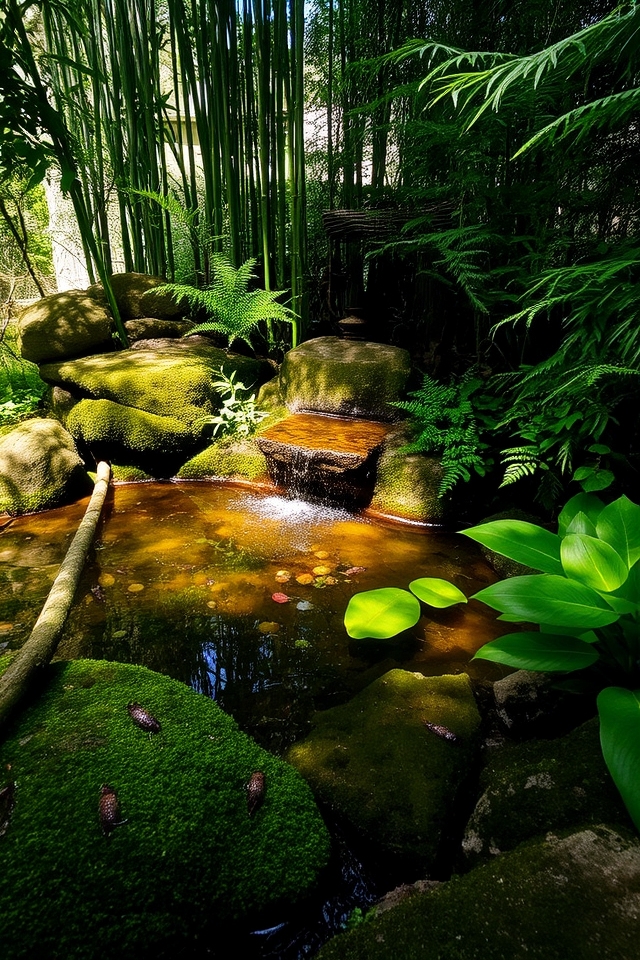
Water features enhance shade gardens by providing a sense of calm and visual appeal. Ponds or birdbaths attract frogs, mosses, and aquatic plants that thrive in shade. Fountains or small streams create relaxing sounds, while reflective surfaces brighten dark areas. Ensure proper drainage and choose shade-loving plants for sustainable, low-maintenance designs.
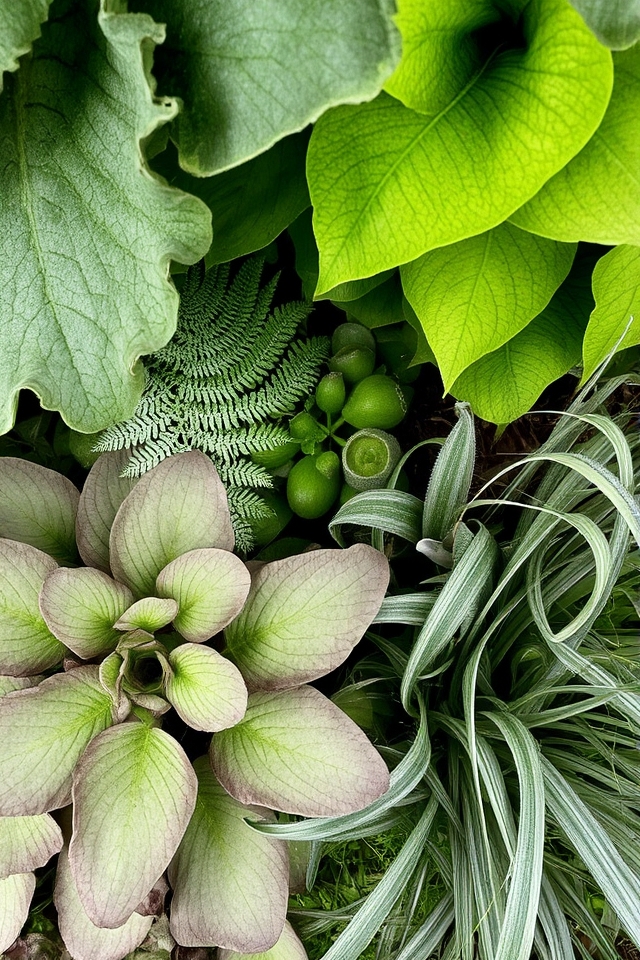
Different foliage textures enhance shade gardens by creating visual depth. Pair delicate fern leaves with bold hostas or ruffled heucheras. Add grasses or lamium for soft, flowing contrasts. Use matte and glossy leaves to add dimension, and vary plant heights to avoid a flat look. Choose plants with unique textures to enhance the garden’s tactile and visual appeal.
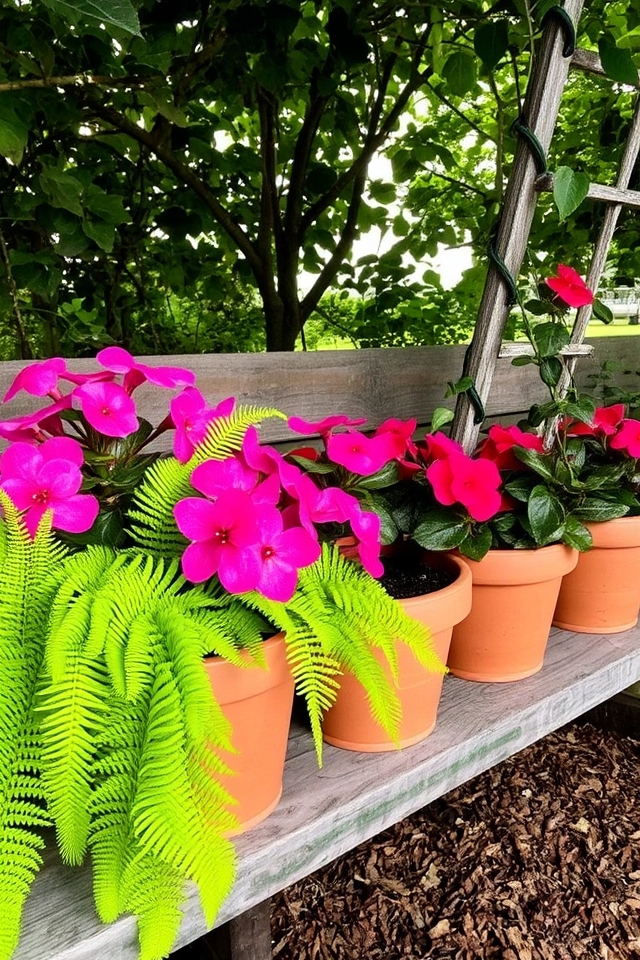
Container gardening in shady areas works well with plants like ferns, begonias, and impatiens. Use well-draining soil and ensure pots have enough drainage holes. Place containers in areas with filtered light or partial shade. Water regularly and use mulch to help retain moisture. Use vertical structures like trellises to maximize space. Avoid direct sunlight to prevent leaf scorch. This is ideal for small spaces or areas with uneven light.
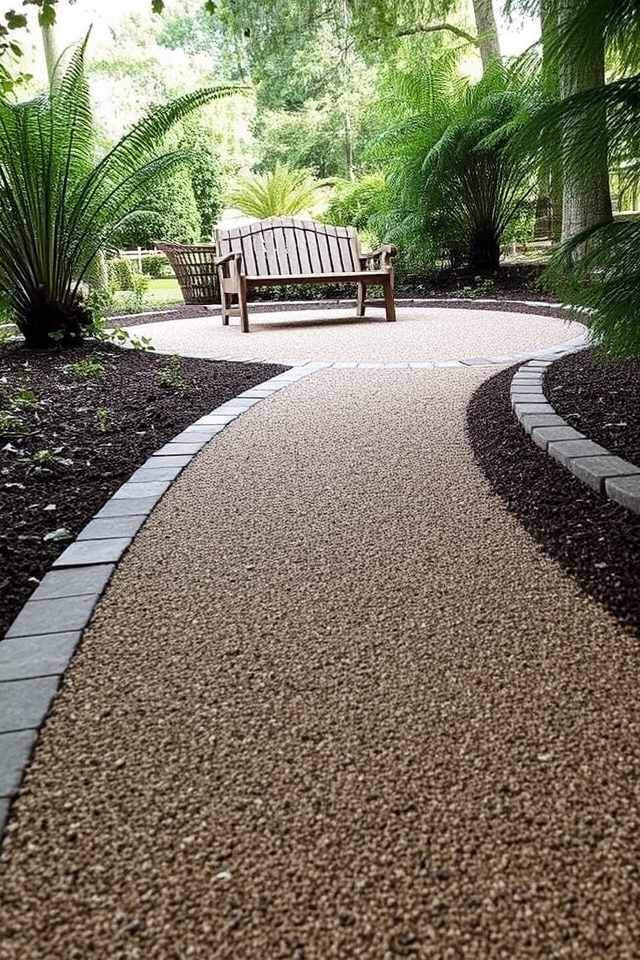
Accessible paths in shade gardens need smooth, stable surfaces like compacted gravel, decomposed granite, or interlocking pavers. Ensure a minimum width of 36 inches for wheelchair access and gentle slopes (1:12) for gradual inclines. Use textured materials for better grip and avoid sharp turns. Add borders or curbs to prevent erosion. Use non-slip finishes and consistent grading to accommodate mobility aids. Keep sightlines clear and include seating areas for rest.

Shade-tolerant trees thrive in low-light conditions, making them perfect for shaded gardens. Examples include Japanese maple, dogwood, and eastern red cedar. These trees adapt to partial or full shade, adding beauty and providing habitat. Their dense canopies offer cooling shade, and some, like Norway maple, improve air quality. Planting them in shaded areas maximizes their growth and enhances garden biodiversity.
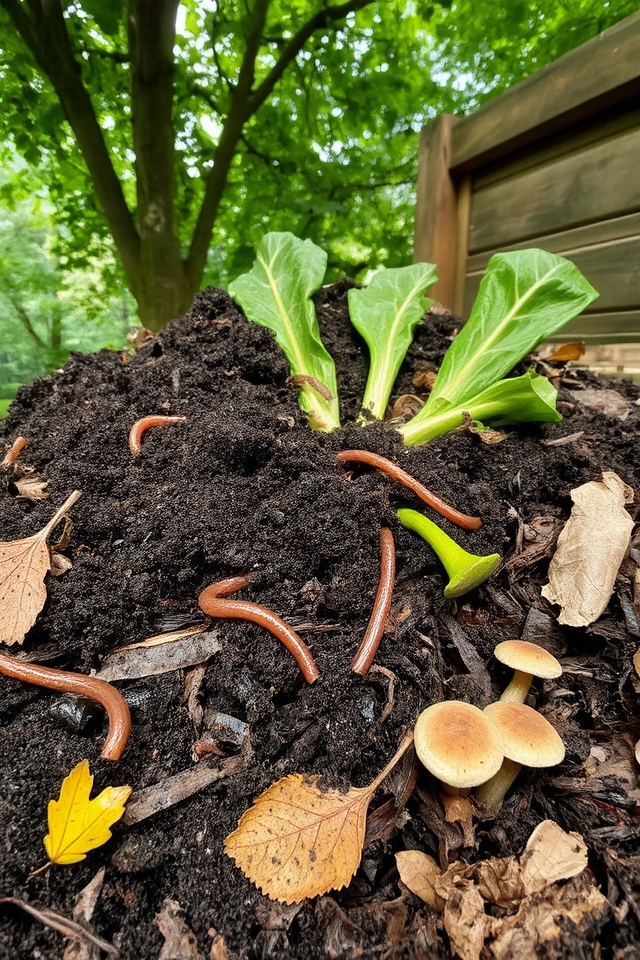
Composting enriches soil with organic matter, improving its structure and water retention. Shade gardens benefit from leafy greens, coffee grounds, and shredded paper. Avoid direct sunlight; keep the pile in shaded areas. Regular turning speeds up decomposition. The nutrients feed plants, boosting growth under tree canopies. Reduce waste while creating sustainable, fertile soil for shade-loving plants.
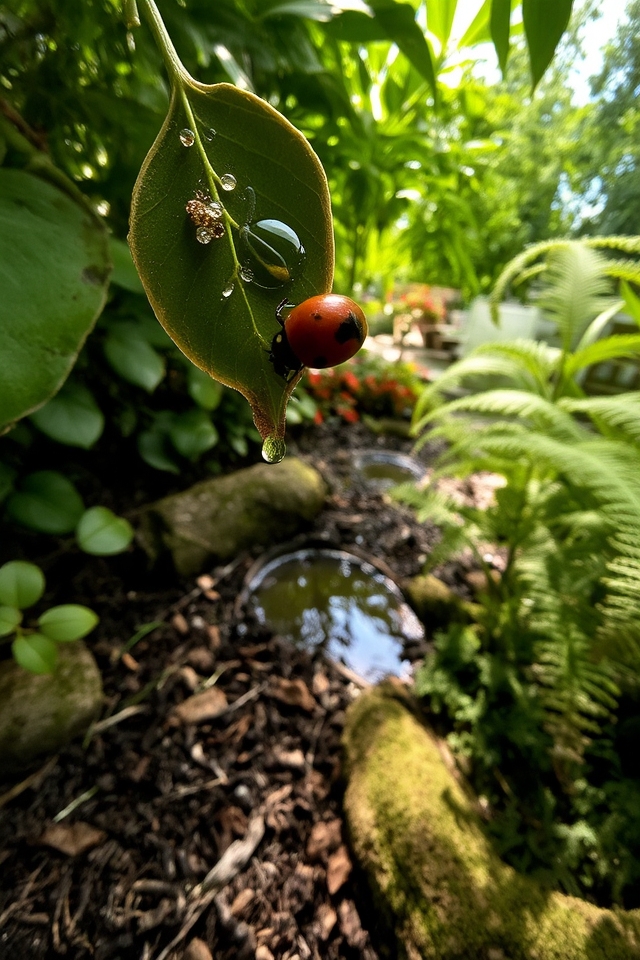
Check shade gardens regularly for pests like aphids, slugs, and spider mites. Use neem oil or insecticidal soap for organic pest control. Remove any infested plants quickly. Encourage beneficial insects like ladybugs. Keep foliage dry to prevent fungal problems. Apply mulch to reduce slug habitats. Avoid overwatering to prevent pests from thriving.
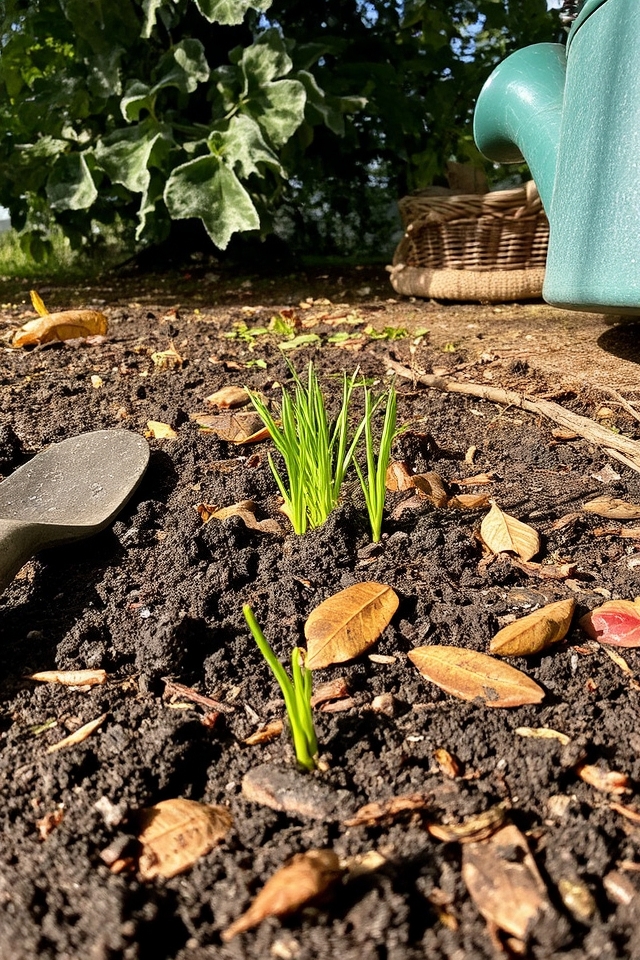
Adjust seasonal care for shade gardens by changing watering, pruning, and fertilizing routines. Spring: Refresh the soil, remove debris, and apply slow-release fertilizer. Summer: Water more often and protect plants from heat stress. Fall: Prune back foliage and add mulch. Winter: Protect roots with insulation and avoid overwatering. Adapt your practices to the plants’ needs to ensure they stay healthy through changing conditions.
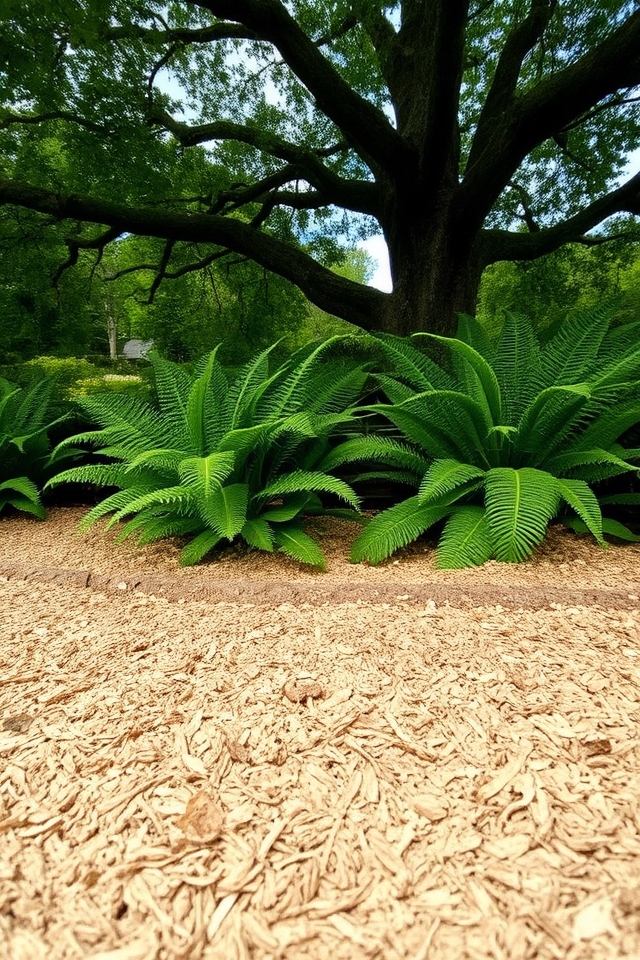
Effective mulching in shade gardens helps retain soil moisture, prevents weeds, and regulates soil temperature. Use organic materials like shredded bark, leaf mold, or compost to enrich the soil as they break down. Apply a 2–4 inch layer, keeping it away from plant stems to prevent rot. Avoid dark mulches that absorb too much heat. Replenish annually to maintain the benefits. This supports healthy growth in low-light conditions.
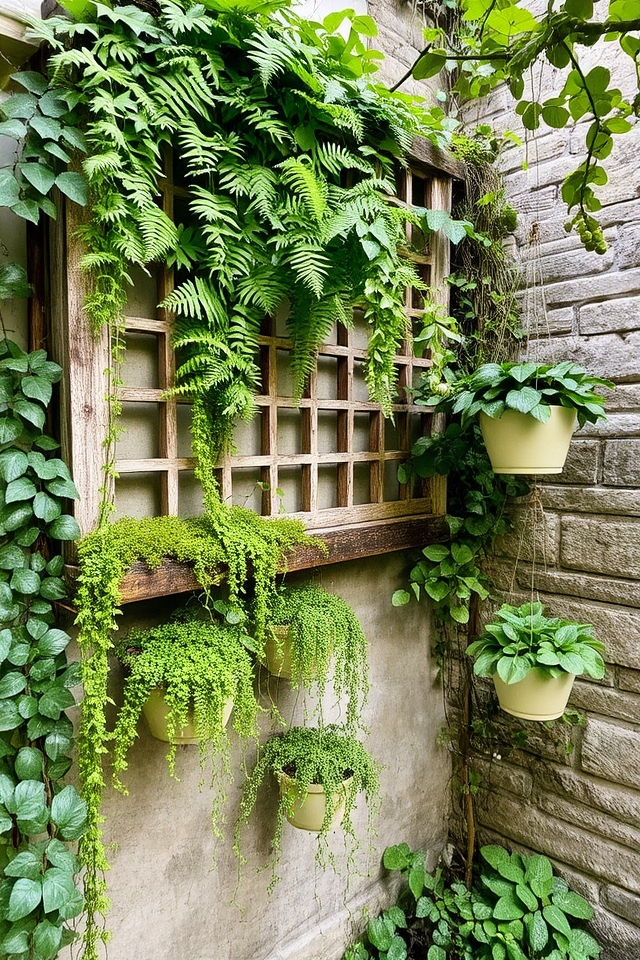
Vertical gardening in shaded areas uses trellises, wall planters, and hanging baskets to maximize space. Choose shade-loving plants like ferns, ivy, or moss. Install lattices or espaliers to support climbing plants. Use containers with well-draining soil and place them near north-facing walls or under trees. This approach saves ground space while improving the look and biodiversity of low-light environments.
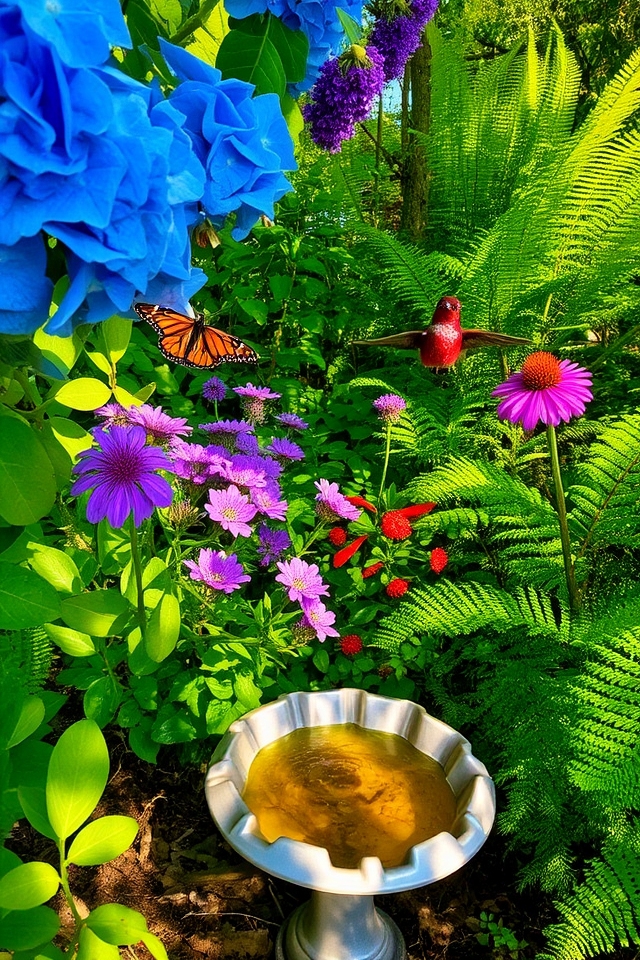
Plant shade-tolerant flowers like hydrangeas, asters, and salvia to attract butterflies. Include native shrubs such as serviceberry or viburnum for birds. Add a shallow water source and avoid using pesticides. Host plants like milkweed support butterfly larvae. Layer foliage to provide shelter and food, creating a vibrant, wildlife-friendly shade garden.
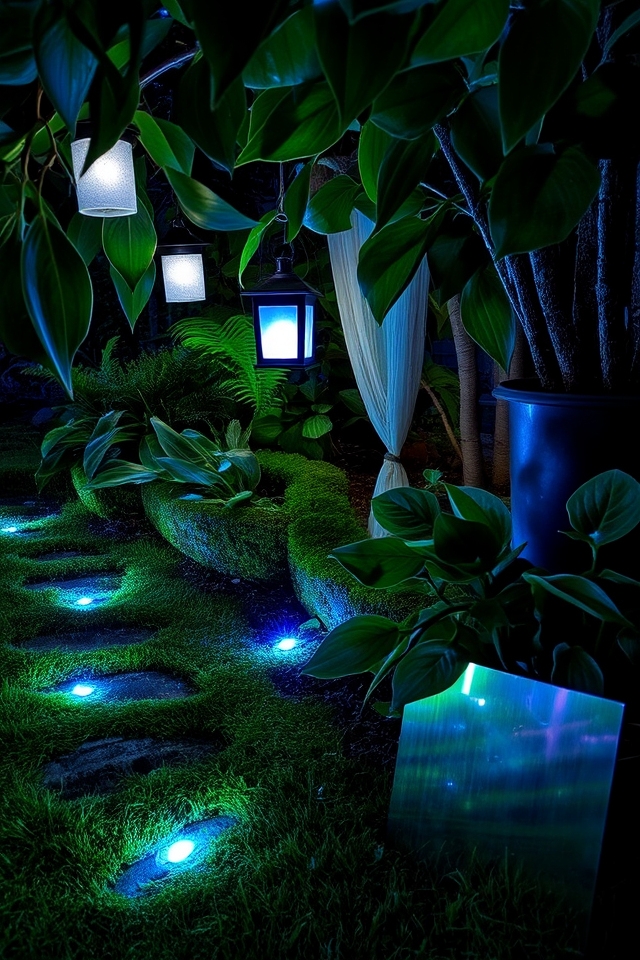
Strategic lighting in shade gardens helps plants grow by selecting the right light sources. Use LED or solar-powered lights for low-light areas, ensuring the right spectrum and intensity. Position lights to avoid shining directly on delicate leaves. Use reflective surfaces to improve light distribution. Match the lighting duration and type to the needs of the plant species, balancing light without overwhelming shade-loving plants.
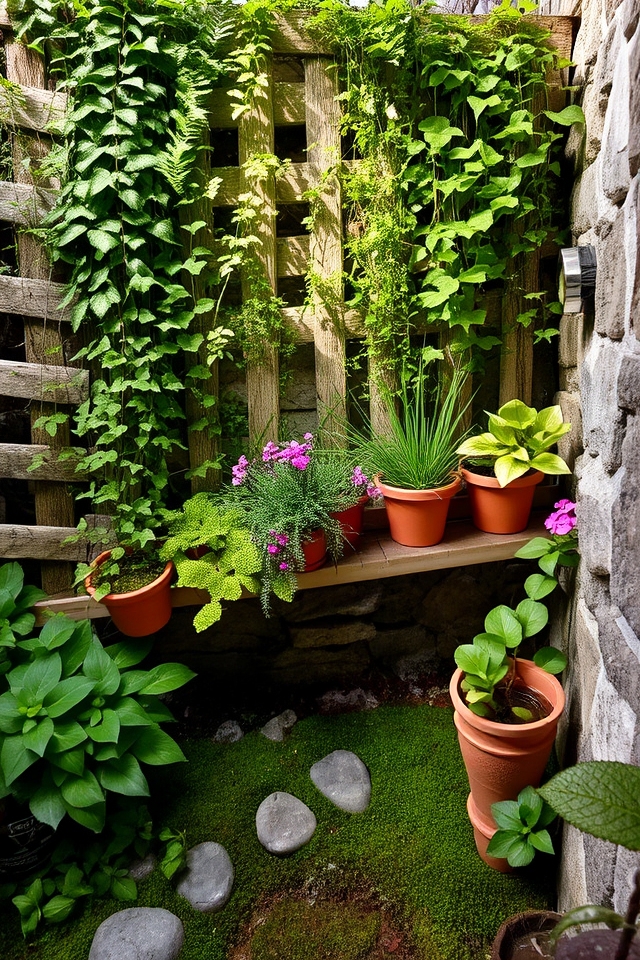
Make the most of small shaded areas with vertical gardening, trellises, or wall planters. Choose shade-tolerant plants like ferns, hostas, or begonias. Use containers for flexibility and better access to light. Add reflective surfaces to brighten the area. Select compact varieties and ensure good drainage. Layer plants for visual interest, combining different textures and colors. Prune regularly to maintain space and promote air circulation.
Ferns, hostas, and mosses flourish in the shade; enrich the soil with compost, use light-colored hardscaping, and layer textures. Add water features or mirrors to brighten the space. Most plants tolerate low light—choose carefully. Prune for airflow, mulch to keep in moisture, and avoid sun-loving plants. Vertical structures maximize space. Attract wildlife with native shrubs. Maintain with care, and your oasis will thrive.

Don't let aphids, slugs, and caterpillars ruin another plant. Take back control with simple, natural methods that actually work.